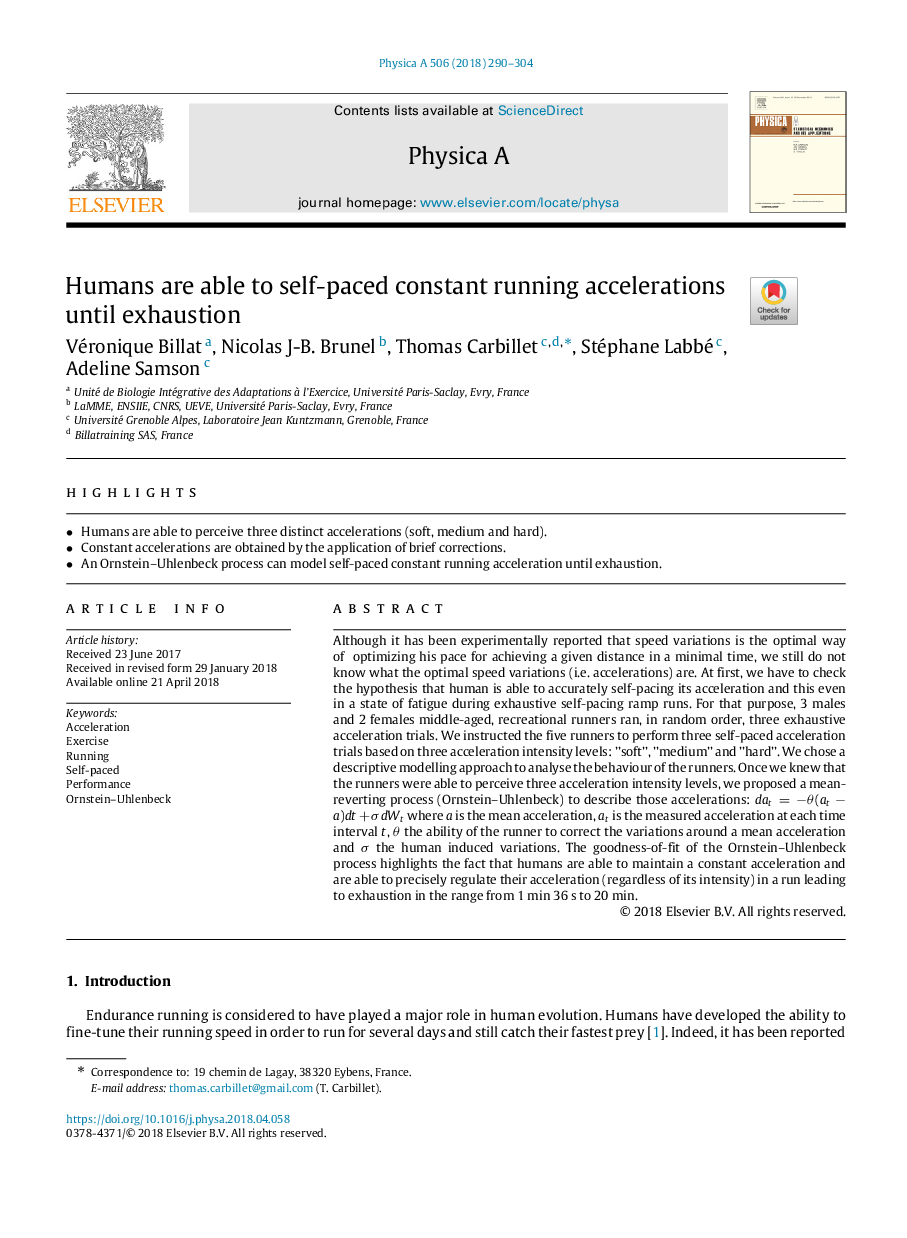| Article ID | Journal | Published Year | Pages | File Type |
|---|---|---|---|---|
| 7375193 | Physica A: Statistical Mechanics and its Applications | 2018 | 15 Pages |
Abstract
Although it has been experimentally reported that speed variations is the optimal way of optimizing his pace for achieving a given distance in a minimal time, we still do not know what the optimal speed variations (i.e. accelerations) are. At first, we have to check the hypothesis that human is able to accurately self-pacing its acceleration and this even in a state of fatigue during exhaustive self-pacing ramp runs. For that purpose, 3 males and 2 females middle-aged, recreational runners ran, in random order, three exhaustive acceleration trials. We instructed the five runners to perform three self-paced acceleration trials based on three acceleration intensity levels: ”soft”, ”medium” and ”hard”. We chose a descriptive modelling approach to analyse the behaviour of the runners. Once we knew that the runners were able to perceive three acceleration intensity levels, we proposed a mean-reverting process (Ornstein-Uhlenbeck) to describe those accelerations: dat=âθ(atâa)dt+ÏdWt where a is the mean acceleration, at is the measured acceleration at each time interval t, θ the ability of the runner to correct the variations around a mean acceleration and Ï the human induced variations. The goodness-of-fit of the Ornstein-Uhlenbeck process highlights the fact that humans are able to maintain a constant acceleration and are able to precisely regulate their acceleration (regardless of its intensity) in a run leading to exhaustion in the range from 1 min 36 s to 20 min.
Related Topics
Physical Sciences and Engineering
Mathematics
Mathematical Physics
Authors
Véronique Billat, Nicolas J-B. Brunel, Thomas Carbillet, Stéphane Labbé, Adeline Samson,
